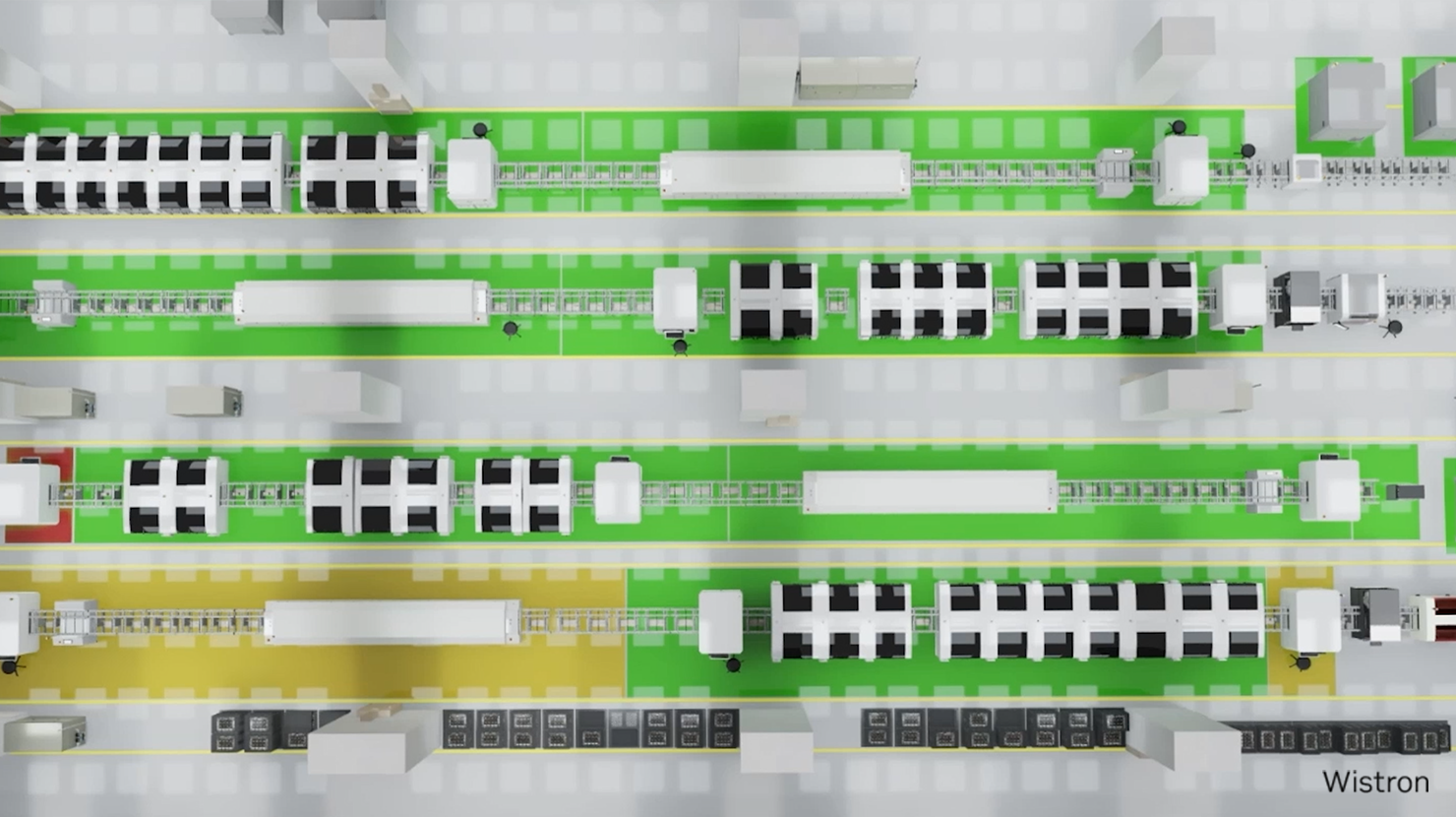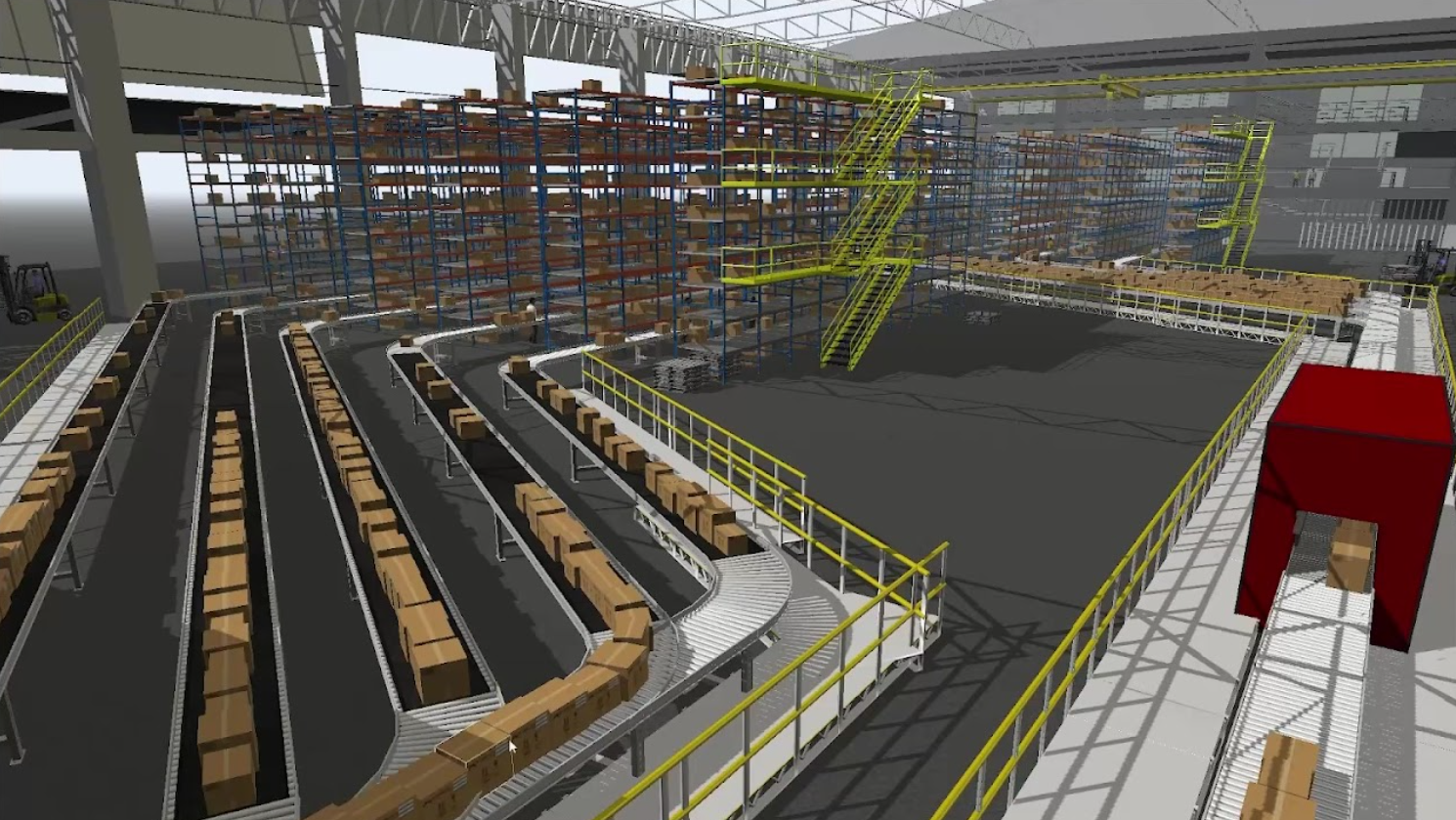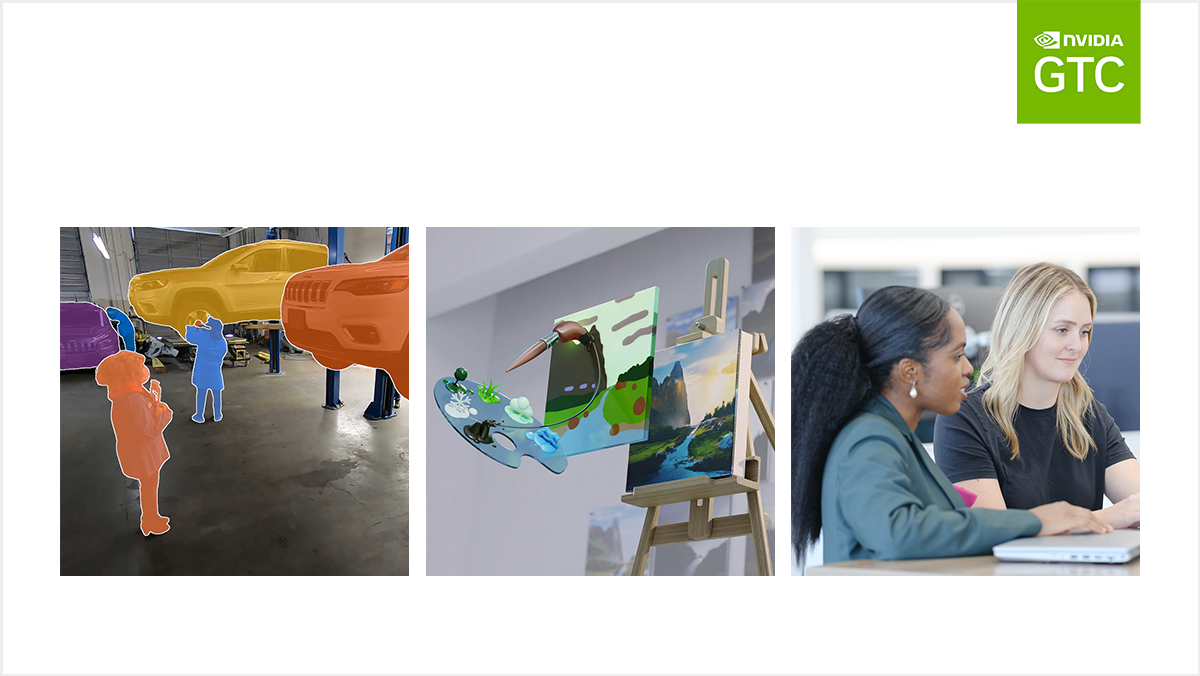SyncTwin GmbH, a company that builds software to optimize production, intralogistics, and assembly, is on a mission to unlock industrial digital twins for small and medium-sized businesses (SMBs).
While SyncTwin has helped major global companies like BMW minimize costs and downtime in their factories with digital twins, they are now shifting their focus to enable manufacturing businesses that don’t have the robust IT departments and digitalization resources that large enterprises do.
To address the needs of these enterprises, SyncTwin has developed an app on NVIDIA Omniverse that uses Universal Scene Description (OpenUSD) to enable their customers to create digital twins of their facilities using data from Microsoft PowerPoint, Excel, PDF, and other non-3D data formats. To make the technology accessible for a wide range of technical levels, they’re integrating generative AI to enable customers to create and modify digital twins with simple text prompts.
The SyncTwin app also uses the NVIDIA cuOpt accelerated optimization engine to significantly enhance the efficiency of factory and warehouse operations.
With digital twins enabled by SyncTwin, manufacturing SMBs are bringing the various domains of their production and operations together in a virtual environment, enabling plant managers, factory planners, and their teams to simulate and evaluate operational scenarios to optimize processes and resources. The result is a projected 30% savings from optimized facilities planning and highly efficient processes.
Unifying manufacturing domains with OpenUSD
Factories are comprised of highly interconnected and interdependent domains. Traditionally, the lack of integration between different domains, such as logistics and assembly, and data, such as building information management (BIM), has resulted in energy and resource wastage.
With OpenUSD, integrating data between these domains in a digital representation of a factory or warehouse becomes possible.
OpenUSD is a powerful interchange and ecosystem to which almost any data source can connect. It is highly extensible and enables you to aggregate various elements of a scene non-destructively, unlocking digital twins at a scale never seen before.
By developing the SyncTwin application on a USD foundation, customers can bring together visual data, production processes, product catalogs, production orders, scheduling, resources, and production environments through asset resolvers. This is made possible through the following features:
- USD file format
- Asset resolver plugins that abstract storage backends and serialization of data to enable complex 3D assets
- Animation that elevates digital twin experiences
Data from Microsoft PowerPoint and Excel can even be connected to digital twins with OpenUSD. For example, SyncTwin can take floorplans from a PowerPoint slide and use bitmapping to accurately reflect the floorplan in the digital twin. Similarly, an Excel spreadsheet with warehouse container data can be connected to populate the warehouse digital twin with accurate inventory.
The ability to combine disparate data sources and achieve a holistic view of factory operations is a revolutionary aspect of SyncTwin. USD provides a standardized format for data exchange, enabling seamless collaboration and unlocking the full potential of factory planning. This structured data space enables improved processes, optimized worker schedules, and real-time monitoring.
“OpenUSD is the common language to bring all these different factory domains into a digital twin,” said Michael Wagner, co-founder and CEO of SyncTwin. “OpenUSD can be instrumental in dismantling data silos and enhancing collaborative efficiency across different factory domains, such as assembly, logistics, and infrastructure planning.”

Optimizing intralogistics with cuOpt
Enhancing the interaction between humans and machines for automated storage and retrieval systems in the picking and packing process is a key focus for many businesses. This enables dynamic routing and rerouting of robots to load trucks efficiently as new orders come in and old ones are returned.
To optimize intralogistics for their customers, SyncTwin uses NVIDIA cuOpt, a GPU-accelerated NVIDIA NIM microservice for operations research, logistics, and route optimization. By integrating the cuOpt NIM into the SyncTwin application, they unlocked near-real-time dynamic decision-making for customers, enabling them to address routing issues with unparalleled accuracy, at scale. With these capabilities, customers can also improve human-machine interactions for automated storage and retrieval, dynamically routing robots for efficient truck loading.

Supercharging factory planning with AI
As SyncTwin continues to pave the way for factories of the future, they are integrating generative AI to accelerate workflows and enable planning teams to interact with digital twins in new ways.
AI-enabled digital twins can play a crucial role in factory planning by supporting planners with operational insights and recommendations. For example, planning teams can more easily identify optimal material locations and potential improvements based on historical data. They can extract key insights from the digital twin’s metadata to understand KPIs such as container count in a storage area.
Overall, AI enables planning teams to quickly conduct complex analyses and make informed decisions about resourcing, machine placement, routing, and more.
As experienced workers retire, AI can help create a knowledge base for training, troubleshooting, and decision-making. By using semantic metadata in all of their OpenUSD components, SyncTwin enables a semantic understanding of factories, products, and processes, paving the way for advanced AI workflows in factory planning.
Developing SyncTwin on Omniverse
SyncTwin has been delivering specialized, innovative solutions for factory planning for years. However, they had yet to tap into the potential of the industrial metaverse and digital twins. Their SyncTwin app developed on the Omniverse platform serves as an enabler for expert tools like ipolog to leverage the powers of OpenUSD, enabling various factory planning tools to contribute to a digital twin environment seamlessly and break data silos.
SyncTwin eliminates the need for manual data collection and enables expert tools to provide valuable insights and solutions directly within the Omniverse ecosystem. In addition to giving customers the ability to simulate numerous scenarios and test various possibilities, they make it easy to export simulation reports, so that users can easily understand how each scenario they simulate affects KPIs.
The development process started with drafts and web apps before fully embracing Omniverse. Getting familiar with the OpenUSD approach of structuring digital twin environments with Layers, References, and VariantSets was crucial, as well as learning from resources provided to the community, such as the 4 Superpowers of OpenUSD Developer Series.
“Getting familiar with the OpenUSD approach is a critical first step to developing powerful tools for industrial digitalization on the Omniverse platform,” said Wagner. “When you begin to organize your data pipelines and digital twin structure holistically, the possibilities are endless.”
Recently, Wagner joined the NVIDIA Omniverse Livestream to share about his experience developing on Omniverse in depth.
Get plugged into the world of OpenUSD
Learn more about OpenUSD and meet with NVIDIA experts at SIGGRAPH, taking place July 28-Aug. 1 at the Colorado Convention Center and online. Attend these SIGGRAPH highlights:
- NVIDIA founder and CEO Jensen Huang’s fireside chat on Monday, July 29, covering the latest in generative AI and accelerated computing.
- OpenUSD Day on Tuesday, July 30, where industry luminaries and developers will showcase how to build 3D pipelines and tools using OpenUSD.
- Hands-on OpenUSD training for all skill levels.
For more information, see the Getting Started With Universal Scene Description series about how OpenUSD can improve 3D workflows. For more resources on OpenUSD, see the Alliance for OpenUSD forum and Alliance for OpenUSD.
Get started with the NVIDIA Omniverse SDK for free, access OpenUSD resources, and stay up to date on Instagram, Medium, LinkedIn, and Twitter. For more, join the Omniverse developer community on the forums, Discord server, Twitch, and YouTube channels. Get started with NVIDIA cuOpt with free access on NVIDIA AI Foundation endpoints and learn how NVIDIA cuOpt can help your organization save time and money.







